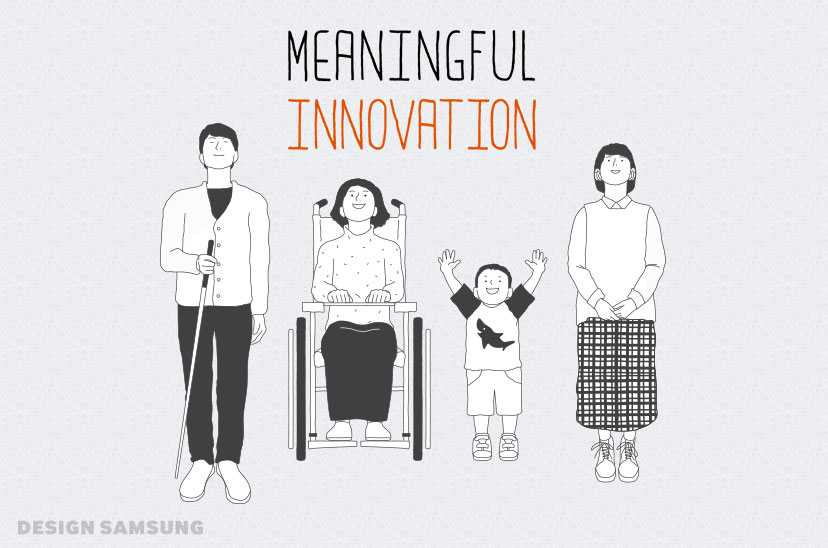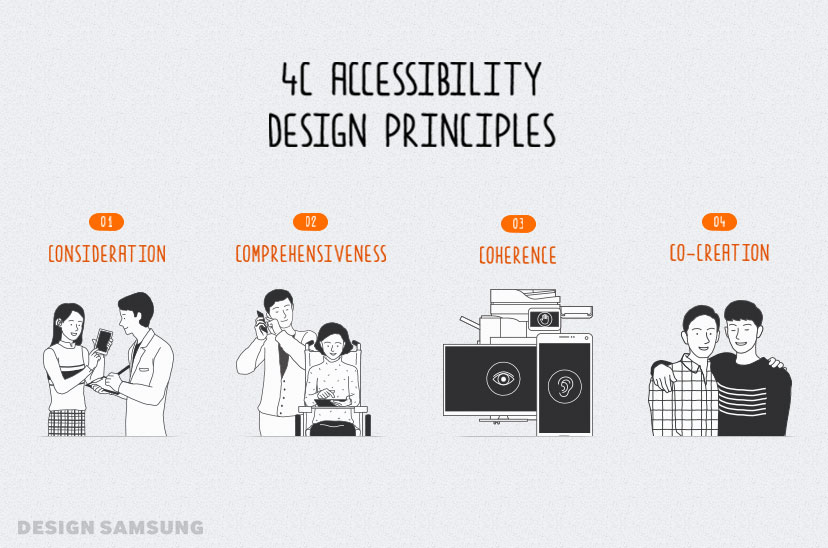[Design Story] Samsung’s Meaningful Design Promises Accessibility for All
on May 29, 2015
The 2011 World report on disability, produced jointly by the World Health Organization (WHO) and the World Bank, states that 15 percent of the world population has some sort of disability. This amounts to 1 billion people — roughly the entire population of the African continent.
Samsung recognizes both the worldwide prevalence of disability as well as the importance of creating an identical user experience for everyone, regardless of their physical or cognitive abilities. As such, the company strives to constantly ensure this by applying accessible, technological innovation to all of our products and services.
For Samsung, “human-centered” isn’t just a tagline, but instead a philosophy to create, innovate and design by.
The Four C’s of Accessibility Design
The four experience design principles of Samsung’s “accessibility for all” approach include: consideration, comprehensiveness, coherence and co-creation.
Samsung considers all users by utilizing a variety of research methodologies to better understand user needs and improve its products based on their opinions and insights. Comprehensive guidelines are then set based on these needs, which are utilized from as early on as the planning stages of each product to ensure a holistic experience for all.
The product guidelines set, which are based on continuous research in accessibility design, ensure that a variety of optional functions provide coherent usability to those that need them.
The Galaxy S6 and S6 edge offer a number of such features. The Voice Assistant allows users with visual impairments to interact with the device using audio and gesture commands. Comparably, the Sound Detector helps those with impaired hearing to distinguish everyday sounds such as the crying of a baby or a doorbell. The Universal Switch lets users control the smartphone interface by using a range of motions, like a head nod or blinking, for example.
Yet Samsung’s accessibility features are not limited to smartphones. Menu transparency, high contrast, enlarged focus and voice guide functions landed the Samsung Smart TV the CES Accessible Technologies Innovation Award earlier this year.
Following the universal design ethos of providing an equaled amount of function and experience to all, Samsung’s MX4/MX7 series printers also employ similar features. Grips and lids can be manipulated with one hand, and maintenance reports can be obtained in a variety of ways.
These features would not have been possible without the dedicated team of professionals from various fields who co-create to provide a product-service-educate system. Employees with disabilities, research institutes and like-minded communities provide a more hands-on approach to our design experience.
Additionally, Samsung conducts and supports internal competitions to open up possibilities of further innovation, not only for the development of products, but also projects that aim to give back to the community.
The Samsung TV accessibility functions previously mentioned were developed alongside the Royal National Institute of Blind People (UK), the Carroll Center for the Blind (USA), the Siloam Center for the Blind (Korea) and the Korea Blind Union.
Similarly, Samsung’s Creative Lab (C-LAB) initiated a project to lower the cost of the previously pricey eyeCan eye mouse, a device that allows a user unable to use his or her hands to navigate a computer interface with eye gestures.
The eye mouse was further developed at the DMC lab in 2014 as a monitor-mounted device and was aptly named EYECAN+. It has since been provided to individuals and organizations of the disability community free of charge, while its software has been opened to the public to be further developed.
Creating Meaning Through Accessibility Design
Samsung’s design approach for product accessibility is not focused on simplifying functionality for those with disabilities, but rather aims to embolden their potential and abilities. Keeping this in mind, the company examines how its products and services can positively impact the lives of all.
By considering the perspective of others and providing innovative technology that allows all users, regardless of their physical and cognitive capabilities, to communicate and interact with the world around them, Samsung creates, and will continue to create, meaningful design.
Visit design.samsung.com to read more Samsung Electronics design stories.



